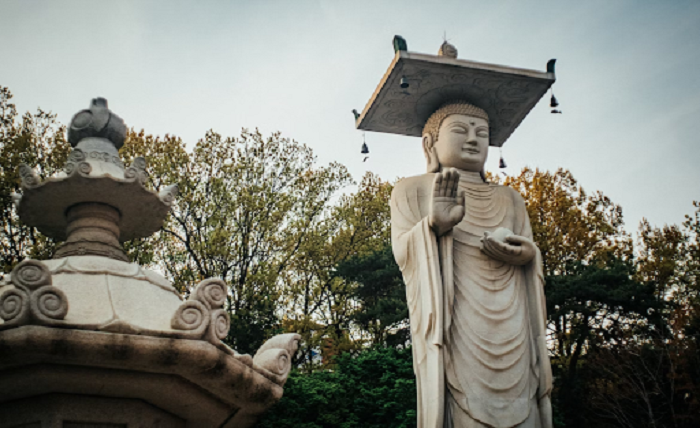Batu Caves and Buddhist Temples: Spiritual Quests in Malaysia and Korea

The pursuit of spiritual enlightenment is a universal journey, and two unique destinations beckon seekers of inner peace and cultural understanding: Malaysia’s Batu Caves and Korea’s tranquil Buddhist temples. These places offer profound experiences that blend nature, culture, and spirituality. Let’s embark on a brief exploration of these spiritual quests, discovering the essence and allure they hold.
Batu Caves: Malaysia’s Sacred Limestone Haven
Nestled in the heart of Malaysia, Batu Caves stands as a testament to faith and natural wonder. These limestone marvels, like ancient cathedrals carved by nature, are not only visually stunning but spiritually significant. At their entrance, the iconic golden statue of Lord Murugan welcomes pilgrims and tourists alike, setting the tone for a profound spiritual journey.
Within the caves, Hindu traditions come to life. Devotees climb the steep steps to pay homage to their deities, carrying offerings and candles as they ascend. Batu Caves also hosts vibrant festivals like Thaipusam, where devotees pierce their bodies with skewers as an act of devotion.
Beyond religious traditions, Batu Caves serve as a symbol of cultural harmony in Malaysia. It’s a place where diverse communities converge, celebrating their faith while appreciating the beauty of these natural limestone formations.
Moreover, the convenience of eSIM technology plays a significant role in enhancing this cultural convergence. eSIM Malaysia allows travelers to stay connected while visiting Batu Caves, offering them valuable information about the site’s cultural significance and religious practices.
Korea: Exploring Tranquil Buddhist Temples
Korean Buddhist temples offer a stark contrast to the limestone caves of Batu. These temples invite visitors to embrace tranquility and mindfulness. Famous temples like Bulguksa and Jogyesa stand as spiritual oases, where the soul finds solace amid the natural surroundings.
Korean Buddhism emphasizes meditation and mindfulness, and temple stays offer travelers a chance to immerse themselves in these practices. Visitors can participate in temple rituals, meditation sessions, and communal dining, gaining insight into the Buddhist way of life.
These temples are integral to Korean culture and history. They’ve witnessed centuries of devotion and are often surrounded by lush forests, creating an atmosphere of serene reverence.
With the practicality of a Korea sim card, visitors to these sacred sites can stay connected with ease. This convenience allows them to access information about temple histories, rituals, and upcoming events, enhancing their understanding of the deep-rooted traditions that these temples represent.
Conclusion
In our exploration of Batu Caves in Malaysia and Korean Buddhist temples, we’ve uncovered two distinct yet equally profound spiritual journeys. Batu Caves immerse you in the natural grandeur of limestone caves, where Hindu traditions and cultural diversity converge. In contrast, Korean temples offer a tranquil escape, where Buddhism’s essence of mindfulness and meditation thrives amidst serene landscapes.
Whether you choose to climb the steps of Batu Caves or seek inner peace in a Korean temple, both destinations offer meaningful encounters with spirituality, culture, and nature. These experiences invite you to step away from the noise of the world and embark on a journey within yourself. As you contemplate your own spiritual quest, consider the allure of Batu Caves and Korean Buddhist temples, each offering a unique path to self-discovery and cultural appreciation.




